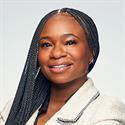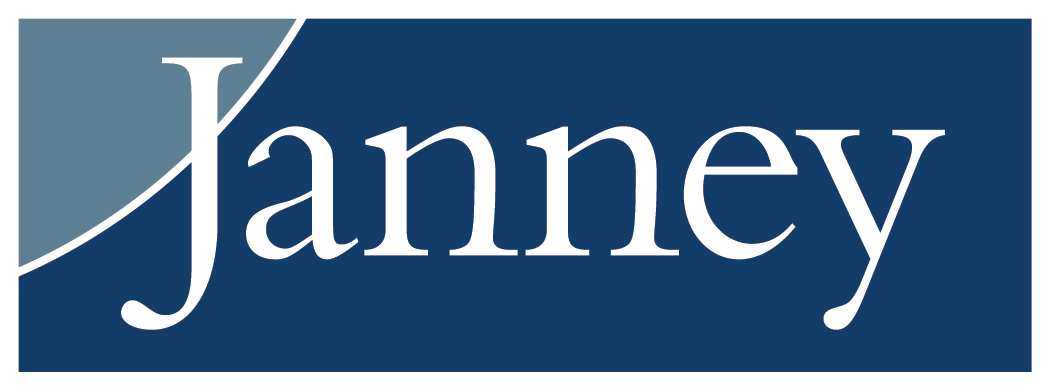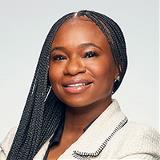A gradual but steady shift in financial and economic power is underway. $10 trillion (about 33%) of total U.S. household financial assets are owned by women— a financial empowerment that’s expected to grow to $30 trillion over the next decade.1
Women are more educated than ever before—earning more than half (53%)2 of all undergraduate and advanced degrees. And this translates to greater financial
independence, with nearly half (41%) serving as the primary breadwinners for their family.3
A Closer Look
Compared to men, women tend to:
- Be more naturally adept to focus on longer-term goals like education planning, saving for retirement, and estate planning;4
- Be considerably more risk aware and focused as much on asset protection as asset growth.4
Yet only about one in four women feel confident about retirement income planning and the ability of our savings to last a lifetime.5
It’s an understandable concern.
Retirement today is less about the end of something. Instead, it is about the beginning of a new chapter in your life—a chapter that could very well last as long (or longer) than your working years. It’s a chance to make new choices and
pursue new passions.
Maybe you want to travel the world. Perhaps you have an avocation that you’ve always dreamed of turning into a second career.
Or there might be one or two social causes you’re keen to devote
more of your time and energy to. Whatever it is you want to achieve, it starts with a plan—but for women, the retirement planning challenges are both somewhat different and often more complex.
The Longevity Challenge
Longer, healthier, and more active lives require more savings to fund additional years of retirement income. And since women tend to live (on average) about five years longer than men, your need for extra savings will be even greater. In fact, one-third of all women will live at least 8 to 10 years longer than the Social Security longevity projections.
Rather than thinking of retirement as a single chapter—it’s helpful to instead plan for three very distinct chapters:
- The Early Years: The first decade of retirement is a time to pursue all the activities you always planned on doing (e.g., traveling, taking classes, volunteering, starting a business). You’ll want to start thinking now about savings goals to support your current lifestyle in retirement. It’s a good idea to plan for your expenses to be higher during this phase, as you fully embrace a newfound freedom of both time and opportunity.
- The Middle Years: This is often a period of self-reflection and deciding on ‘what’s next.’ Many women find themselves redefining their goals and priorities—often spending more time with family and friends. Annual expenditures typically begin to lessen as you become less active.
- The Late Years: During these years, attention often turns to healthcare and legacy planning. Expenses often pick back up, fueled by rising medical costs.
Planning for each of these phases separately can make it easier to prioritize the saving and spending decisions you need to make. How quickly you progress through these phases will depend on many factors—from how healthy and active your lifestyle
is, to how willing you are to maintain intellectual and social engagement. Additionally, you and your spouse (if you’re married) could potentially find yourselves in different phases at the same time depending on your age and health.
Living longer also means you can expect higher lifetime healthcare expenses. A woman retiring in 2022 can expect to spend an average of $165,000 on health care costs throughout retirement.6 And that doesn’t even include the potential costs associated
with needing long-term care.
As if the need to save more for retirement then men (despite the lingering gender pay gap) isn’t stressful enough, you may also face other challenges.
Balancing Career, Childcare, and Eldercare
We’ve all heard the term ‘sandwich generation’ in the media. But what does it actually mean? As primary caregivers, women often find themselves torn between the demands of a career, emotionally and financially caring for children, and then—right as they’re entering their peak earning years in their 40s and 50s—being called on to care for an aging parent.
First and foremost, this unexpected new role can exact an emotional toll as you deal with a parent’s declining mental and/or physical health. But it can also take a tremendous financial toll in the form of:
- Lost wages due to either taking a sabbatical to provide care or scaling back on your work hours;
- A resulting reduction in both your retirement savings and your future Social Security benefit (if you lose key earning years that would be factored into your benefit calculation);
- The potential stalling of your career and loss of advancement opportunities; and
- Significant out-of-pocket costs if you opt to hire a caregiver so you can continue working.
Take Control of Your Future
Did you know that at some point in their lives, 9 out of 10 women will be solely responsible for their finances? Investing for your future isn’t something that any women should leave solely in the hands of a spouse. You need to take an active role in making these critical decisions. We can help you implement a disciplined retirement savings and income planning process. Not only will this process help you clearly articulate and quantify realistic spending goals, but will help to align each of those goals to what you’ll need to save to meet those income requirements, based on your projected retirement income. Together, we can explore a range of possible solutions including:
- Maximizing your tax-deferred savings. The IRS caps the amount of money you can put into your retirement accounts each year. For your 401(k) retirement plan, the that maximum in 2021 is $19,500, and for IRAs it's $6,000. Once you turn age 50, however, you can take advantage of catch-up contributions to increase those limits to $26,000 for your 401(k) and $7,000 for your IRA.
- Addressing future healthcare costs. Whether it’s putting additional money aside in your employer’s health savings account (HSA) to cover future out-of-pocket healthcare expenses, or exploring various long-term care insurance options, it’s important to factor this significant expense into your retirement plan.
- Boosting your retirement income sources. Depending on your personal circumstances, you may want to consider working a few years longer (which can benefit you in several ways including saving more, delaying the need to start drawing down your savings,
and delaying Social Security). Regardless of when you retire, it will still be important to carefully explore your Social Security claiming options. And you may want to consider purchasing an annuity as an additional source of guaranteed lifetime
income.
Working With Janney
Depending on your financial needs and personal preferences, you may opt to engage in a brokerage relationship, an advisory relationship or a combination of both. Each time you open an account, we will make recommendations on which type of relationship is in your best interest based on the information you provide when you complete or update your client profile.
When you engage in an advisory relationship, you will pay an asset-based fee which encompasses, among other things, a defined investment strategy, ongoing monitoring, and performance reporting. Your Financial Advisor will serve in a fiduciary capacity for your advisory accounts.
For more information about Janney, please see Janney’s Relationship Summary (Form CRS) on www.janney.com/crs which details all material facts about the scope and terms of our relationship with you and any potential conflicts of interest.
By establishing a relationship with us, we can build a tailored financial plan and make recommendations about solutions that are aligned with your best interest and unique needs, goals, and preferences.
Contact us today to discuss how we can put a plan in place designed to help you reach your financial goals.
1. "Women are gaining more power when it comes to money - here's why that's a big deal." Empowered Investor, CNBC.com. May 3, 2022.
2. Census Bureau Releases New Educational Attainment Data. www.census.gov. February 24, 2022.
3. "Breadwinning Mothers Are Critical to Families’ Economic Security." American Progress.org. March29, 2021.
4. Fidelity Investments, "Women and Money" Survey, May 2017
5. “Women’s Retirement Literacy Report,” American College for Financial Services, January 2021
6. "Health Care in Retirement Will Cost an Average of $315,000." PlanSponsor.com. May 16, 2022.
Janney Montgomery Scott LLC, its affiliates, and its employees are not in the business of providing tax, regulatory, accounting, or legal advice. These materials and any tax-related statements are not intended or written to be used, and cannot be used or relied upon, by any taxpayer for the purpose of avoiding tax penalties. Any such taxpayer should seek advice based on the taxpayer’s particular circumstances from an independent tax advisor.
About the author

Vice President & Director, High Net Worth Consulting
Read more from Shurdonna JosephRelated Articles
-
Financial Planning
10 Key Changes to the SECURE 2.0 Act
Saving for retirement is getting easier in 2024 thanks to SECURE 2.0. Here, we outline highlights... -
Business Planning
Secure 2.0 Act: What Plan Sponsors Need to Know in 2024
An array of new provisions under the SECURE 2.0 Act are on tap this year that are expected to pro... -
Retirement Planning
Consider a Backdoor Roth if You Make Too Much to Contribute to a Roth IRA
While the tax advantages of a Roth IRA can be very enticing, it has income limits that may exclud...





